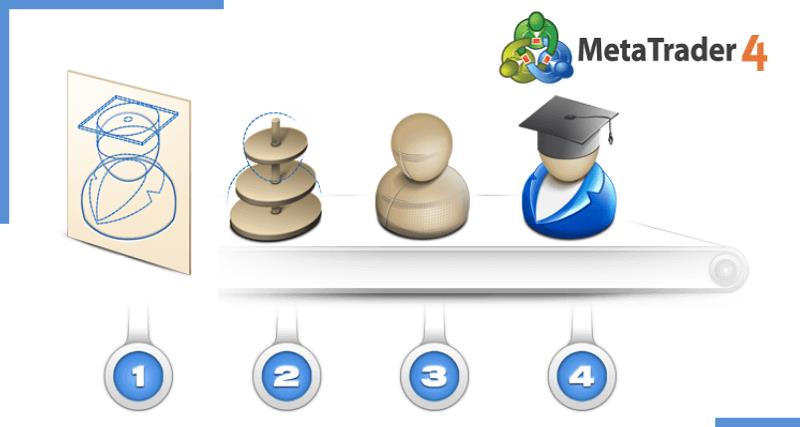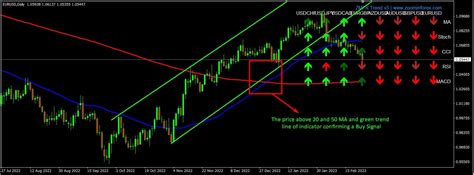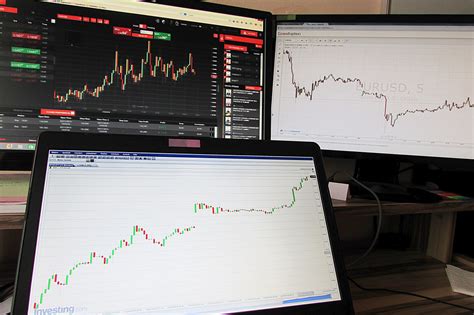

Table of contents
If you’ve been around Forex trading for even a minute, you know it’s not just about pulling the trigger—it’s about timing it right. That’s where MQL4 Pending Order Parameters come in. Think of them as your set-it-and-forget-it toolkit. Instead of staring at charts all day, you can automate your entries with precision. No more second-guessing or missed opportunities; just clean, calculated moves.
As trading legend Ed Seykota once said, "The goal of a successful trader is to make the best trades. Money is secondary." MQL4 Pending Orders let you do just that—focus on strategy, not button-pushing. By understanding the parameters, you’re setting your trades up for success before the market even blinks.
This guide will break down the types, setups, and killer optimizations that turn pending orders into profit machines. Ready to trade smarter, not harder? Let’s jump in.

MQL4 Pending Orders are powerful tools in Forex trading that allow traders to automate order execution based on predefined conditions.
MQL4 Pending Orders are instructions to execute a trade at a specific price level in the future, set within the MetaTrader 4 (MT4) platform. These orders are programmed using MQL4, a scripting language designed for automated trading. Pending Orders enable traders to predefine their entry and exit points, enhancing their trading strategy by avoiding emotional trading decisions and capturing market movements even when away from the platform.
Key Characteristics:
Order Types: Buy Limit, Sell Limit, Buy Stop, Sell Stop
Execution Timing: Executes when market price reaches the predefined level
Automation: Integrated with Expert Advisors (EAs) for hands-free trading
Strategic Flexibility: Traders can set up complex strategies without constant monitoring.
Risk Management: Pre-set Stop Loss and Take Profit levels minimize unexpected losses.
Better Entry Points: Lock in optimal prices even when you're not at your screen.
Avoid Emotional Trading: Orders execute based on logic, not reaction to market swings.
"Pending Orders are a trader's way of putting their plan into action without hesitation," says Alex Ramos, Forex Trading Analyst.
| Feature | Pending Orders | Market Orders |
|---|---|---|
| Execution Time | At a specified price level | Instantly at market price |
| Price Control | Greater control over entry | Subject to slippage |
| Best for | Strategic planning | Immediate execution |
| Market Impact | Less impact; waits for price | Immediate impact |
Pending Orders allow for strategic planning and risk control, while Market Orders focus on instant execution. Understanding both helps traders choose the right strategy based on market conditions.
Understanding the types of MQL4 pending orders is crucial for optimizing trading strategies. Each order type serves a unique purpose, allowing traders to navigate various market conditions effectively.

Buy limit and sell limit orders are designed to execute trades at a specific price level. A buy limit is placed below the current market price, while a sell limit is set above it. These orders ensure that trades occur only when the market reaches a favorable price.
Determine the desired entry price.
Place a buy limit if the price is below the current bid price.
Set a sell limit if the price is above the ask price.
Example:
A trader might set a buy limit at 1.2050 if they believe the price will drop before rising.
Expert Insight:
"Using limit orders helps traders avoid emotional decision-making by predefining entry points." - Alex Morgan, Forex Analyst
Buy stop and sell stop orders are used when traders expect the market to move in a specific direction. A buy stop is placed above the current market price, while a sell stop is below it. These orders activate when the market hits the specified stop price.
Buy Stop: Ideal for momentum trading, capturing upward breakouts.
Sell Stop: Suited for breakout trading, profiting from downward movements.
Pro Tip:
Use buy stop orders to enter when the market price rises, while sell stop orders capture falling prices.
Pending orders are vital in breakout strategies, where traders capitalize on sudden price movements. A breakout occurs when the price moves beyond a support or resistance level, indicating potential for a new trend.
Stop Orders: Capture moves after price breaks through a level.
Limit Orders: Enter trades after a confirmed price retracement.
Combination Orders: Mitigate risks in volatile markets.
Trading Tip:
Place a buy stop slightly above resistance or a sell stop below support to confirm the breakout.
| Order Type | Purpose | Market Condition |
|---|---|---|
| Buy Stop | Capture upward breakout | Bullish momentum |
| Sell Stop | Catch downward breakout | Bearish momentum |
| Limit Order | Entry after retracement | Volatile, uncertain trends |
Combining different pending orders can enhance risk management and improve capital protection. For instance, using a buy stop with a sell limit can balance exposure during uncertain trends.
Hedging: Combine buy stop with sell limit to offset potential losses.
Position Sizing: Use stop loss and take profit to limit risks.
Capital Protection: Mix order types to minimize drawdowns during volatile sessions.
Real-World Example:
A trader might set a buy stop above a breakout point while simultaneously placing a sell limit at a projected exit price to lock in profits.
This structured approach helps traders choose the right pending orders based on market conditions and risk tolerance. Proper understanding and application ensure more controlled and strategic trading outcomes.
Setting up MQL4 Pending Orders in MetaTrader 4 (MT4) is a critical skill for effective Forex trading. Let's break it down step by step.
Download and Install MT4 Platform
Obtain the MT4 platform from your broker's official site.
Complete the installation guide and launch the platform.
Login and Server Connection
Use your Login credentials provided by your broker.
Ensure a secure server connection to access live data.
Account Setup and Platform Customization
Configure charting tools, indicators setup, and Expert Advisors (EAs).
Adjust platform settings to match your trading preferences.
Open the Trading Terminal
Navigate to the Trading terminal and select "New Order".
Choose the Pending Order option and set the desired order type.
Finalize the Configuration
Input the entry price, stop loss, and take profit levels.
Verify the expiration date and confirm the order.
Even seasoned traders trip up during setup. Here’s how to dodge the most common errors:
Check Server Connection: Connection issues are a pain. Double-check your internet and server status before placing orders.
Avoid Incorrect Configuration Settings: Misconfigured stop loss or take profit values can lead to unexpected trade closures.
Verify Broker Compatibility: Not all brokers support all MT4 features—make sure yours does.
Prevent Account Verification Issues: If your account isn’t verified, pending orders might not execute.
"The biggest mistake is assuming everything is set up correctly. Always double-check your parameters." — John Murphy, Forex Analyst
Understanding MQL4 pending order parameters is crucial for accurate trade execution and risk management. These settings directly influence the efficiency of your trading strategy.

In MQL4, volume and price configuration directly affect the execution and outcome of your pending orders. Setting the correct volume is essential as it determines the amount of a trade, while the price indicates the level at which the order triggers.
Volume Settings:
Define the quantity of assets involved.
Adjust according to risk tolerance and strategy size.
Example: A volume of 1.0 represents a standard lot in Forex.
Price Thresholds:
Set the price level to trigger the order.
Ensure it aligns with your strategy's target value and market conditions.
Adjust based on historical data or technical analysis.
| Parameter | Example Value | Description |
|---|---|---|
| Volume | 1.0 | Standard lot size in Forex |
| Price Level | 1.2500 | Target price for order execution |
| Adjustment | ±0.0005 | Minor tweaks based on volatility |
Pending orders in MQL4 can include expiration settings to define how long an order remains active. Setting the validity period correctly ensures that trades are executed only within a desired time frame.
Expiration Date:
Choose a specific date and time to end order validity.
Ideal for strategies targeting short-term price movements.
Validity Duration:
Set for hours or days, depending on your trading goal.
Helps manage temporary market conditions.
Short-Term Orders: Best for volatile markets.
Long-Term Orders: Suitable for trend-following strategies.
No Expiry: Use when confident in long-term stability.
Applying stop loss and take profit levels is essential for risk management. These parameters ensure that your position automatically closes when the target level is reached, minimizing loss or securing profit.
Stop Loss Settings:
Defines the price level where losses are capped.
Set slightly below support for buy orders or above resistance for sell orders.
Example: Stop Loss at 1.2450 on a buy position.
Take Profit Settings:
Specifies the exit price for securing gains.
Align with technical indicators like Fibonacci retracement levels.
Example: Take Profit at 1.2550 on a buy position.
Quote: "Proper stop loss and take profit settings are not just a safety net but a fundamental part of a successful trading strategy." — John Harrison, Forex Analyst
By configuring volume, price, expiration, and risk parameters correctly, you optimize pending order performance in MQL4, leading to more strategically sound trades.
Managing MQL4 Pending Orders efficiently ensures seamless trading and better execution of strategies. Understanding how to track, modify, alert, and cancel orders in MT4 is crucial for optimal trading results.
Monitoring orders on the MT4 platform is straightforward yet powerful.
Use the "Terminal" window to view all open orders and closed orders.
The "Account History" tab shows previous trades, while the "Trade" tab displays current positions.
For real-time tracking, the Order Ticket provides detailed order parameters.
Pro Tip: Right-click on any order and select "Chart Window" to see historical execution directly on your trading chart.
Adjusting orders on MT4 in real-time allows for quick reactions to market changes:
Right-click on the order in the Terminal window and choose "Modify or Delete Order."
Update Stop Loss or Take Profit levels based on market conditions.
Modify pending order prices directly if the market is moving against your strategy.
Real-time modifications help prevent potential losses and secure profits when price volatility kicks in.
Setting up alerts in MT4 for pending orders ensures you never miss a critical price movement.
Right-click on the Trading Chart and select "Trading" → "Alert."
Define the trigger price and choose your notification type: sound alert or email alert.
Alerts can be configured for specific order types and entry prices.
This way, you stay on top of your trades even when away from your terminal.
Sometimes, it's necessary to cancel and replace orders swiftly to adapt to market shifts.
To cancel an order, right-click it in the Terminal window and select "Close Order."
For quick replacement, duplicate the order parameters with adjustments and re-execute it.
Efficient order management minimizes losses and capitalizes on profitable opportunities during market fluctuations.

When it comes to Forex trading, the concept of automation is nothing short of revolutionary. Picture this: you are out for dinner with friends, enjoying a good conversation, and somewhere in the background, your MQL4 Expert Advisor (EA) is executing pending orders with pinpoint accuracy. No manual intervention, no staring at screens for hours. Just pure, seamless automation. It is like having a seasoned trader working for you 24/7, only this trader is powered by MQL4 code, sharp logic, and ruthless precision.
Automation in MQL4 is driven by what the industry knows as Expert Advisors (EA). These are custom-coded programs designed to automatically manage your trades based on predefined strategies. Think of it as a pilot on autopilot; the EA handles everything from identifying trade opportunities to executing orders, all while keeping slippage control and order parameters in check. With the power of the OrderSend function, it is possible to place different types of pending orders—Buy Limit, Sell Limit, Buy Stop, and Sell Stop—without lifting a finger. The EA handles the heavy lifting, monitoring price movements, and executing trades at just the right moments.
"Why should I trust an automated system with my money?" you may ask. This is where the concept of Magic Numbers comes in. Each order placed by an EA is tagged with a unique Magic Number, allowing the system to track and manage positions accurately. Imagine owning a key that fits only one door; Magic Numbers ensure that the EA can distinguish its own trades from manually executed ones.
Of course, automation is not without its challenges. Error handling is a critical aspect of MQL4 automation. Network interruptions, insufficient margin, and price changes can cause orders to fail. A robust EA is designed to catch these errors, retry if necessary, and log the events for further analysis. It is the digital equivalent of having a backup plan for every scenario.
As the final layer of this automated masterpiece, Order Ticket Management and Position Management come into play. Each trade executed generates an order ticket, which acts as its digital fingerprint. Through this ticket, the EA can modify or close positions based on market conditions. It is like having your very own pit boss at the trading desk, constantly watching and adjusting your orders with flawless efficiency.
"Automation is the heart of modern trading," says Jacob Mason, a leading Forex analyst at FXStreet. "Manual trading is like dialing a rotary phone in the age of smartphones. EAs are the next logical step for anyone serious about trading efficiency."
If you are looking to step into the world of automated trading, mastering MQL4 automation is not just a skill—it is a game-changer.
MQL4 pending orders sometimes fail, causing frustration and missed trading opportunities. Understanding common failures and troubleshooting can help maintain smooth trading operations.
Pending order failures in MQL4 can happen due to various technical and market-related reasons. Identifying the root cause helps in quick resolution.
Insufficient Funds or Margin Call:
Orders get rejected when the account lacks sufficient funds or hits a margin call. Check your balance before placing large-volume orders.
Network Error or Connectivity Issue:
Temporary network errors can disrupt order placement. Restart your router or check your connection to ensure stable trading.
Price Slippage:
Orders fail when the market price changes rapidly, especially during high volatility. Setting a wider price range can mitigate this issue.
Invalid Parameters:
Incorrect order volume or invalid price settings often lead to failure. Double-check the input values to ensure they meet broker requirements.
Account Suspension or Restrictions:
Orders are blocked if your account faces suspension or restriction due to non-compliance or regulatory issues. Contact support for resolution.
System Error:
Sometimes, the MT4 platform itself glitches. Restarting the platform usually resolves such temporary issues.
| Reason | Typical Issue | Suggested Solution |
|---|---|---|
| Insufficient Funds | Rejected order | Deposit additional funds |
| Price Slippage | Order not executed | Widen the price range |
| Network Error | Disconnected from server | Restart router or MT4 |
Expert Insight:
"Market volatility is a double-edged sword. While it offers trading opportunities, it also increases the likelihood of order failures." - Alex Turner, Forex Analyst
When pending orders fail, a structured troubleshooting approach is essential.
Check Error Codes and Logs:
Review the MT4 error logs to identify specific issues. Error codes like "130" (invalid stops) give clues about the failure reason.
Verify Connectivity:
Check your internet connection and ensure the MT4 platform is online. Restarting the platform can also clear minor glitches.
Inspect Order Status and Transaction History:
Navigate to the order history to see the failure message. Understanding whether it’s a rejection or an error aids in targeted troubleshooting.
Examine Account Balance and Margin:
Ensure your account has enough funds and that your margin level is adequate to place the pending order.
Contact Support if Issues Persist:
If all checks fail, reach out to your broker's support with details, including error codes, logs, and transaction history.
Pro Tip: If the issue recurs, consider reconfiguring your order parameters to align with current market conditions.
MQL4 Pending Orders are like setting traps in the market—patiently waiting for the perfect moment to catch your trade. By understanding the key parameters and how to configure them properly, you can execute strategies with precision and confidence. Managing, automating, and troubleshooting these orders keeps you ahead of market swings and reduces manual errors.
As Warren Buffett once said, “Risk comes from not knowing what you’re doing.” Mastering MQL4 Pending Order Parameters puts you in control, turning market uncertainty into calculated opportunity.
Buy Limit is used when you want to purchase at a price lower than the current market price, anticipating that the market will drop before rising.
Buy Stop is set above the current market price, anticipating a breakout upwards.
The key difference is price positioning: Buy Limit expects a pullback, while Buy Stop expects a continuation.
To set an expiration for a pending order in MetaTrader 4, you can follow these steps:
Right-click on the pending order in the "Terminal" window.
Select "Modify or Delete Order."
In the modification window, enable the Expiration checkbox and choose your desired date and time.
Confirm the changes to activate the expiration.
Yes, pending orders can be modified after placement. You can adjust:
Price levels: Entry, Stop Loss, and Take Profit.
Expiration dates: Extend or reduce the timeframe.
Volume (lot size): Increase or decrease the trade size, depending on broker policies.
There are several reasons why a pending order might be rejected:
Insufficient margin in your trading account.
The price set is too close to the current market price (broker-specific distance rules).
Market volatility caused slippage beyond acceptable parameters.
Volume (Lot Size): Defines the trade size.
Price: Entry price for the pending order.
Stop Loss (SL) & Take Profit (TP): Risk management parameters.
Expiration Date: Optional setting for when the order should be canceled if not activated.
MQL4 scripts can automate the placement and management of pending orders. By using predefined logic, they:
Automatically set entry, SL, and TP levels.
Trigger multiple orders simultaneously based on market conditions.
Cancel or modify orders without manual intervention.
Yes, there are certain risks:
Market Gaps: Orders might activate at unfavorable prices during high volatility.
Slippage: Execution might differ from the intended price.
Order Expiration: If not managed, orders may expire before market movement.
Pending orders are most effective during:
Breakout strategies: When anticipating significant price movement.
Range-bound markets: To catch reversals at support or resistance levels.
High-impact news releases: To avoid market noise and capture trend shifts.